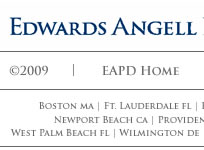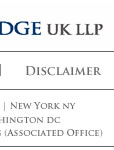
Woolf - Ten Years On
Background to Civil Procedure Rules (CPR)
In his 1994 report, Access to Justice Lord Woolf concluded that the system of justice at the time was too expensive and complex, too slow, and too adversarial. As a result, it had become inaccessible to many. The fact that there was no requirement to exchange sufficient information at an early stage led to uncertainty and disputes being prolonged, as well as the possibility that a party could be ambushed at trial with further evidence. Additionally, sanctions for non-compliance were ineffective and there was no real incentive to settle a case early. In the final analysis, the pre-CPR system was not seen to be delivering justice. Woolf's report precipitated the CPR, which came into force in England and Wales on 26 April 1999.
Woolf's Aims
Woolf's intention, as epitomised in the Overriding Objective in CPR Part 1, was to make litigation more fair, and to improve access to the courts by speeding up cases and reducing costs. Parties would also be encouraged to settle before litigation was commenced, and efforts would be made to ensure that the costs of litigation were proportionate to the dispute and the financial position of each party.
Analysis of the CPR
Case Management
The CPR transferred responsibility for managing claims from solicitors to judges. Case Management Conferences (CMCs) were introduced as a way for judges to direct the case, often by setting stringent timelines. This measure aimed to restrain adversarial excesses, an approach first adopted in the United States.
CMCs appear to have been well received, with 98% of respondents to the Woolf Network's (a group of 130 solicitors who agreed to be polled by the Law Society on their views on the CPR's operation (initially twice yearly, later yearly) as a means of monitoring the reforms) third survey published in 2001 saying they were working well.
Opponents to CMCs have generally raised two objections: first, that they grant judges excessive discretion, which can lead to inconsistency and unfairness since some judges may be better managers than others or may be more proactive or overbearing in their approach; and second, that they increase rather than reduce the expense of litigation. Case management can save costs by preventing parties or their advisers drawing out proceedings, but there is clearly a risk that it can lead to more court hearings or other case events which would increase costs.
Additionally, judges making case management decisions do not necessarily have sufficient knowledge of a case to set an appropriate procedural timetable. No 'docket' system was adopted whereby the same judge would be assigned to the case from inception. There has also been difficulty in finding sufficient time in the judiciary's already very full schedules for them to prepare fully in complex, document-heavy cases. In practice, parties may find that they would prefer to have more control over the timetable and the management of the case to ensure they have adequate time to prepare their case properly.
Pre-Action Protocols
The CPR introduced a number of protocols prescribing how certain types of disputes should be managed prior to the issue of proceedings. The purpose of these protocols is to encourage the early exchange of full information in an attempt to avoid litigation and promote pre-action settlement dialogue. There are now ten protocols in the CPR. Where no relevant protocol exists, there are general guidelines which prescribe the pre-action conduct expected by the courts. The courts take non-compliance seriously and the CPR provide a number of sanctions ranging from cost penalties to a stay of proceedings to encourage adherence.
The pre-action procedure prescribed by the CPR can be an effective way of preventing parties bringing claims and defences without merit. In particular, the requirement for pleadings to be verified by a statement of truth (CPR Part 22) helps to filter out claims and defences which are without foundation.
However, whilst in some cases the pre-action conduct prescribed by the CPR does lead to settlement, claimants are known to misuse the protocols to fish for evidence to support a speculative claim, while defendants have used them to drag out the time before proceedings are issued against them.
Costs
The concept of "saving expense" forms part of the Overriding Objective. However, the pre-action procedure prescribed by the CPR has led to the frontloading of costs, making it expensive to get a case off the ground. The threat of high costs at an early stage may have discouraged many members of the public, and also small and medium-sized enterprises, from engaging in the civil justice system. In February 2002, the fourth Woolf Network Survey recorded 81% of respondents as saying that they did not agree that the new procedures were cheaper for their clients.
Pre-action disclosure in particular can be an onerous and costly exercise, which only has to be repeated during the disclosure stage if the claim does not settle. It seems likely that in the current economic climate, many companies will seek to use pre-action disclosure as a method of assessing their chances in litigation. However, the recent case of Anglo-Irish Bank Corporation Plc v West LB AG [2009] EWHC 207 (Comm) demonstrates that the courts are willing to take a more restrictive approach to the issue in some circumstances. In this case, the High Court refused to grant the claimant pre-action disclosure on the basis that it would be unduly burdensome to the defendant, and it was not clear that the documents sought would resolve the merits of the case.
A more successful introduction has been the Summary Assessment of Costs, which has resulted in a significant reduction in the number of interim applications. Under the CPR, judges have been required to assess costs summarily at the end of a trial on the fast track or at the conclusion of any other hearing which has lasted not more than one day. As a result, a judge may have to assess the costs of a hearing immediately. This streamlines the process and avoids a detailed assessment undertaken by a separate costs officer after the proceedings have finished. However, there can be inconsistency in this approach, with some judges allowing all or nearly all of the costs claimed whilst others appear to automatically reduce the costs claimed by a certain percentage.
Alternative Dispute Resolution (ADR)
The CPR actively encourages the use of ADR, such as mediation, with cost consequences if a party unreasonably refuses to engage. The courts are willing to grant a stay of proceedings for ADR and will often enquire whether any ADR process has been considered. The Centre for Effective Dispute Resolution (CEDR), one of the leading organisations offering ADR, has reported an increase in mediation of 100% since April 1999.
Part 36 (Offers to Settle)
Prior to the CPR there were limited means by which a party could forcefully encourage another party to settle a case. Under Part 36, a party, claimant or defendant, may make an offer to settle prior to issuing a claim or during proceedings. Failure by the claimant to beat a defendant's offer at trial or failure by a defendant to achieve a judgment lower than a claimant's offer is taken into account when costs are assessed. This has been welcomed as a means of resolving claims more quickly.
Experts
An important innovation aimed at avoiding partisanship and at saving costs is the power given to the Court to direct the parties to select a single joint expert. After two years of this new rule being in operation, the Lord Chancellor's Department reported that post-CPR, joint expert witnesses were used in 41% of cases involving any expert witnesses. However, the measure is not without problems. If the Court directs appointment of a single joint expert, the parties have tended to appoint their own "shadow" experts who will advise them on how to deal with the joint expert. This process is likely to lead to increased costs (although some savings may nonetheless be achieved through a shortening of the trial). Also, the Court might direct the use of a single joint expert in inappropriate cases where there is a legitimate difference of expert opinion. It is arguable that justice would be best served in such cases by allowing the parties to call their own experts.
Comment
Ten years on, the Woolf Reforms continue to be fiercely debated. Some argue that the increased focus on case management and dispute resolution can only be a good thing, whilst others say that the CPR has blocked access to justice for many, putting litigation further out of reach for those who genuinely need it.
The main issue continues to be the rising cost of litigation. In some part this is a consequence of modern technology: disclosure in the age of e-mail is a vast exercise, with significant costs often being incurred. However, there is no doubt that rising costs have to some extent been exacerbated by increasing demands placed upon parties during case management, the very measure introduced to prevent this. Paradoxically, increased judicial control, with one judge allocated to a case from start to finish with a real understanding of the issues and the parties, could reduce these costs. Lord Justice Jackson is currently undertaking a review of costs, due to be released towards the end of 2009 (although he published a preliminary report on 8 May 2009), which may go some way to addressing these issues. His preliminary report is examined in this issue of EAPD's Commercial Litigation Review .
It seems that ultimately the Woolf Reforms were a move in the right direction. Procedural requirements such as the pre-action protocols and the emphasis on dispute resolution have gone a long way in discouraging parties from entering into unnecessary litigation. If trial is unavoidable, then increased judicial control and case management should also allow the process to be expedited and more efficient.
On the other hand, the Woolf Reforms may not have gone far enough. There are strong arguments that further judicial involvement in case management earlier on in the process would realise Woolf's aims and allow allocated judges to manage cases from a position of knowledge, although this remains a controversial proposition for many in the profession. There is no doubt that the next decade will see the CPR being revisited and revised, as the Courts try to find the best course for justice.
Contacts
The information in this newsletter is for general guidance only and is not intended to be a substitute for specific legal advice. If you would like any further information please contact:

Laurence Harris
Partner, Commercial Litigation - London
t: +44 (0) 20 7556 4445
e: LHarris@eapdlaw.com

Sascha Grimm
Trainee Solicitor - London
t: +44 (0) 20 7583 4055
e: SGrimm@eapdlaw.com









